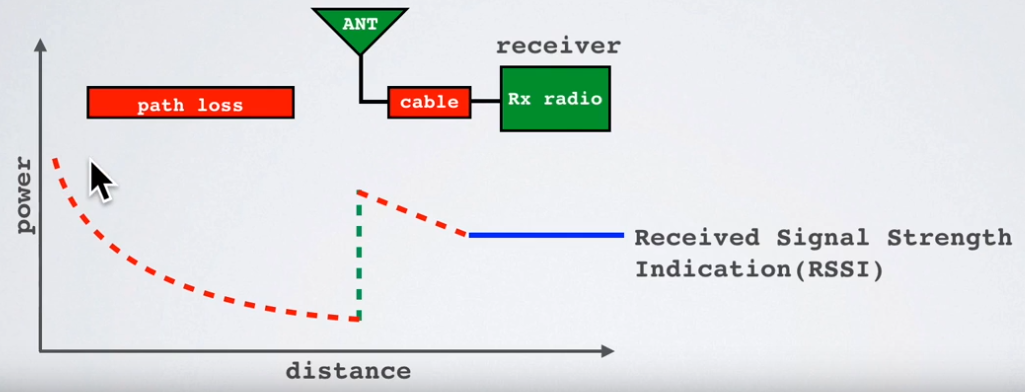
Long Range - LoRa
Loon Range - Lora is a low-powered wide area network LPWAN protocol developed by Semtech.
RSSI

The Received Signal Strength Indication (RSSI) is the received signal power in milliwatts and is measured in dBm.
This value can be used as a measurement of how well a receiver can “hear” a signal from a sender.
The RSSI is measured in dBm and is a negative value.
The closer to 0 the better the signal is.
Typical LoRa RSSI values are:
RSSI minimum = -120 dBm.
If RSSI=-30dBm: signal is strong.
If RSSI=-120dBm: signal is weak
Eaxmple using the Sparfun node 20m
rssi -97
snr 7
Eaxmple using the Sparfun node 50m
SNR
Signal-to-Noise Ratio (SNR) is the ratio between the received power signal and the noise floor power level.
The noise floor is an area of all unwanted interfering signal sources
which can corrupt the transmitted signal and therefore re-transmissions
will occur.
If SNR is greater than 0, the received signal operates above the noise floor.
If SNR is smaller than 0, the received signal operates below the noise floor.
Normally the noise floor is the physical limit of sensitivity, however LoRa works below the noise level.
Typical LoRa SNR values are between: -20dB and +10dB
A value closer to +10dB means the received signal is less corrupted.
LoRa can demodulate signals which are -7.5 dB to -20 dB below the noise floor.
Back

